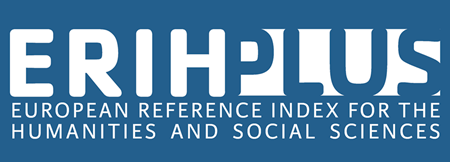THE MODEL OF A NATIONAL LEADER IN NOVELS IN POEMS BY L. KOSTENKO
DOI:
https://doi.org/10.32782/folium/2025.7.37Keywords:
historical novel, novel in verse, image, concept, sixties, nation, state, national leader.Abstract
The article determines that Lina Kostenko in her novels in verse offers three concepts of national leaders, which she embodies through the images of historical figures. The purpose of the article is to analyze these images, determine their leading characteristics, name those qualities that the writer defines in political figures as significant, important. It is worth noting right away that it is important to talk about the concept of a national leader, and not about the historical character of the person being mentioned. The model of a national leader is formed by the writer in accordance with the ideas and ideals of the sixties, and therefore is imbued with humanism, national consciousness, high ideals. A positive, nationally oriented leader in the novels in verse by L. Kostenko is B. Khmelnytsky. He embodies all the virtues and characteristics that the sixties sought to see in political figures: he cares about the state, tries to think about the interests of each citizen, and balances between a politician who is interested in a common goal and a person who understands the price of such a common goal for an ordinary person. It is worth noting separately that L. Kostenko fits Khmelnytskyi, as an ideal political leader endowed with all possible virtues, into the nonideal conditions of real life, while simultaneously emphasizing the idea that the problems of the state and citizens are not always associated with the shortcomings of the political leader. Ivan Bohun is an option for a positive national leader, whom L. Kostenko portrays as a radical political figure, prone to quick decisions, actions here and now, without taking into account long-term prospects, focused primarily on his own, albeit high, values, and not on common interests. The harmonious interaction between Khmelnytsky and Bohun as models of political figures is a guarantee of the prosperity of the state and the people. B. Khmelnytsky is contrasted with the image of I. Vyshnevetsky, who is shown as an example of a negative national leader. He cares exclusively about his own financial and political interests, he is not interested in the state, the people, or the fate of an individual.
References
Дзюба, І. (2007). Ліна Костенко. З криниці літ. Т.3 : Літературні портрети. Дніпровський меридіан. Зі спогадів. С. 534–546.
Костенко, Л. (2010). Берестечко. Київ : Либідь. 232 с.
Костенко, Л. (1979). Маруся Чурай. Київ : Радянський письменник. 190 с.
Панченко, В. (2005). Ржищів Ліни Костенко. День. 2005. 25 листопада. С. 6–7.
Петрук, Н., & Гапченко, О. (2021). Модель ідеального людського життя і світоглядні парадигми української духовності (кінець
XVI – XVII ст.). Вісник Львівського університету. Серія філос.-політолог. студії, 39, 22–29.
Сеник, Л. (2021). Іван Франко та його поема «Мойсей». URL: http://ntsh.org/content/ivan-franko-i-yogo-poema-moysey












